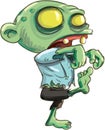We had several really great guesses for our mystery artifact this week, all variations on the same theme. Everyone guessed that the function of this hinged artifact had something to do with pressing, cracking, stamping, or squeezing a variety of objects including garlic, dough, nuts, lemons, metal, or leather. I especially enjoyed Jess C.'s idea that this could aid in crafting "a ruggedly elegant serving tray for deviled eggs."
This object is a lard press. It's primary function was to squeeze excess lard out of the "cracklings" as the lard was being rendered, or cooked down for other uses. Cracklings are solids left in the melted lard which would be skimmed out and pressed in order to squeeze out every useful drop of the melted lard. The cracklings could then be baked into corn bread, making it "crackling bread" (and eliminating the need to add shortening to the bread dough), or could be crumbled over eggs or salads (presumably they were the forerunner of today's bacon bits).
The lard, meanwhile, was left to solidify for use in cooking or other household chores. Not only was lard used for baking and frying food, it was also used as an alternative to butter as a spread or dip for breads through the mid-20th century, especially during the food shortages of World War II. While it's popularity declined in favor of vegetable-based shortenings, lard is beginning to make a culinary comeback. I was surprised, in researching this article, to find a haute cuisine movement towards "rediscovering" lard in cooking; the search "19th century uses for lard" turned up several posts extolling the virtues of lard and trying to debunk it's reputation as less healthy than vegetable oils. (See this page for a particularly interesting argument for lard over butter or vegetable-based shortenings, including information about the British "lard crisis" of 2006: https://www.foodpreservationmethods.com/meat-preservation/lard ).
As mentioned above, lard had several non-culinary uses in the past. One of the most common uses included soapmaking, which required combining the rendered lard with lye to create a chemical reaction that would produce soap. Lye could be "homemade" by pouring water through a barrel of ashes so that the lye would leach out of the ashes, and then the lye water would be added to the lard as can be seen in this video:
Lye is very caustic and can burn any exposed skin, so if you decide to take up soapmaking, be careful!
Lard certainly has many uses, so it is easy to see why lard presses were used to squeeze every last useful drop out of the cracklings! I will leave you with this page listing 10 practical modern-day uses for lard, so that when the zombie apocalypse comes, you too can be prepared!
http://www.thepathfinderstore.com/10-practical-uses-for-lard/




No comments:
Post a Comment